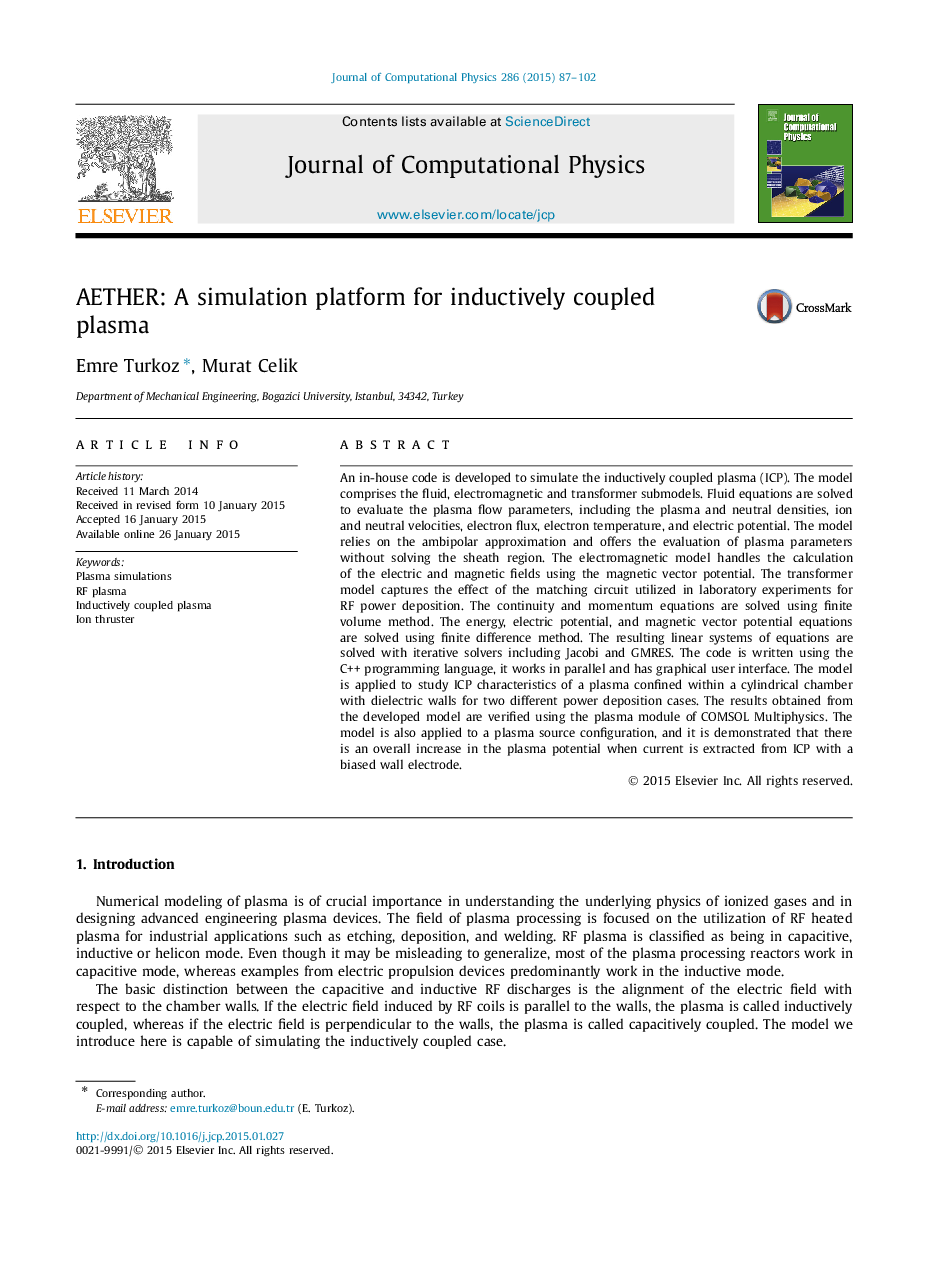| Article ID | Journal | Published Year | Pages | File Type |
|---|---|---|---|---|
| 518165 | Journal of Computational Physics | 2015 | 16 Pages |
An in-house code is developed to simulate the inductively coupled plasma (ICP). The model comprises the fluid, electromagnetic and transformer submodels. Fluid equations are solved to evaluate the plasma flow parameters, including the plasma and neutral densities, ion and neutral velocities, electron flux, electron temperature, and electric potential. The model relies on the ambipolar approximation and offers the evaluation of plasma parameters without solving the sheath region. The electromagnetic model handles the calculation of the electric and magnetic fields using the magnetic vector potential. The transformer model captures the effect of the matching circuit utilized in laboratory experiments for RF power deposition. The continuity and momentum equations are solved using finite volume method. The energy, electric potential, and magnetic vector potential equations are solved using finite difference method. The resulting linear systems of equations are solved with iterative solvers including Jacobi and GMRES. The code is written using the C++ programming language, it works in parallel and has graphical user interface. The model is applied to study ICP characteristics of a plasma confined within a cylindrical chamber with dielectric walls for two different power deposition cases. The results obtained from the developed model are verified using the plasma module of COMSOL Multiphysics. The model is also applied to a plasma source configuration, and it is demonstrated that there is an overall increase in the plasma potential when current is extracted from ICP with a biased wall electrode.
